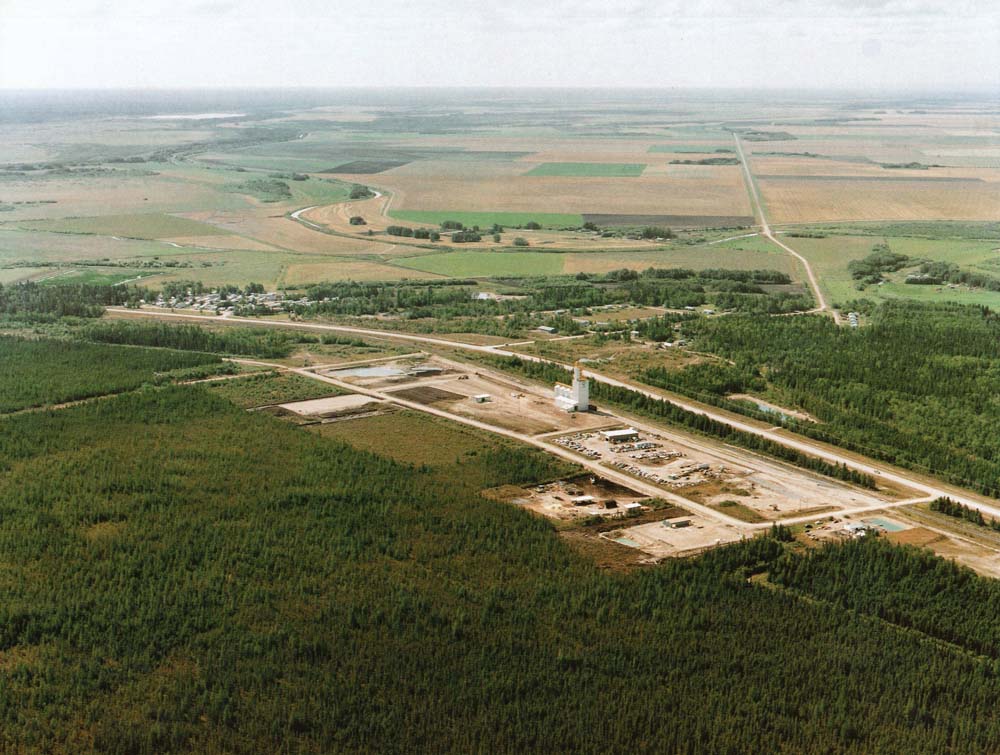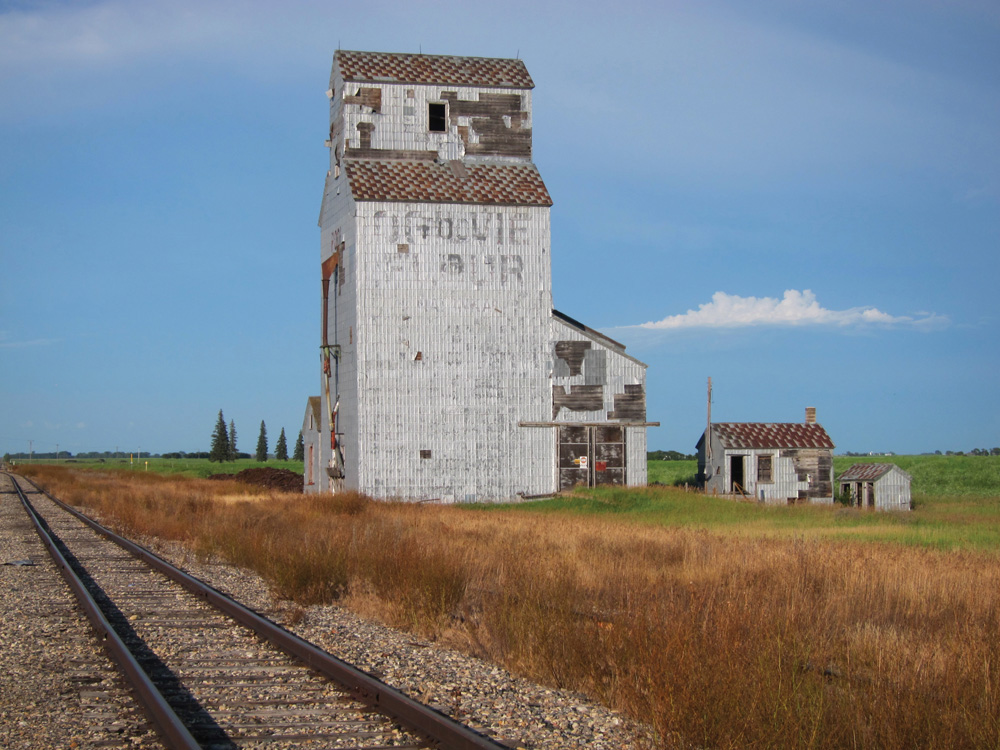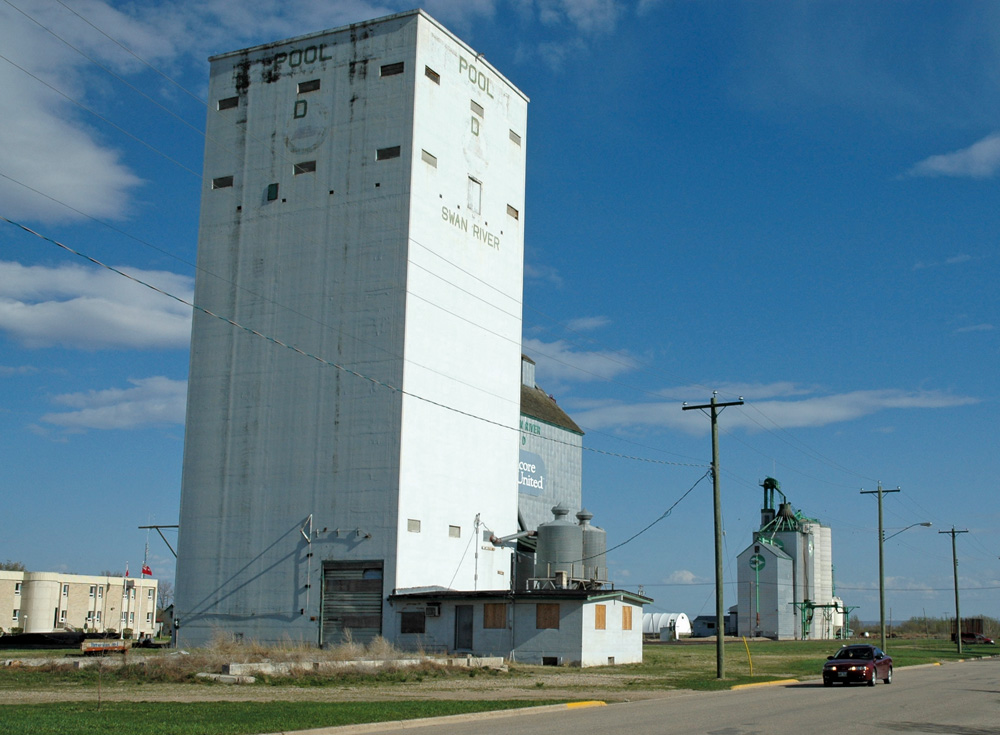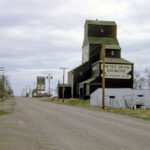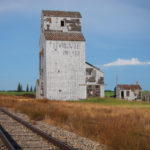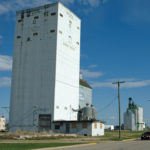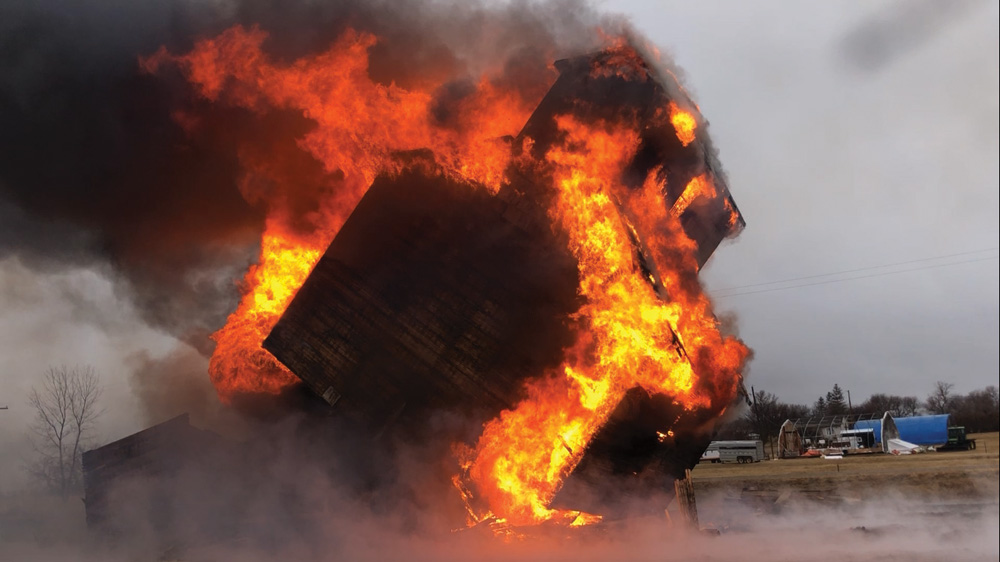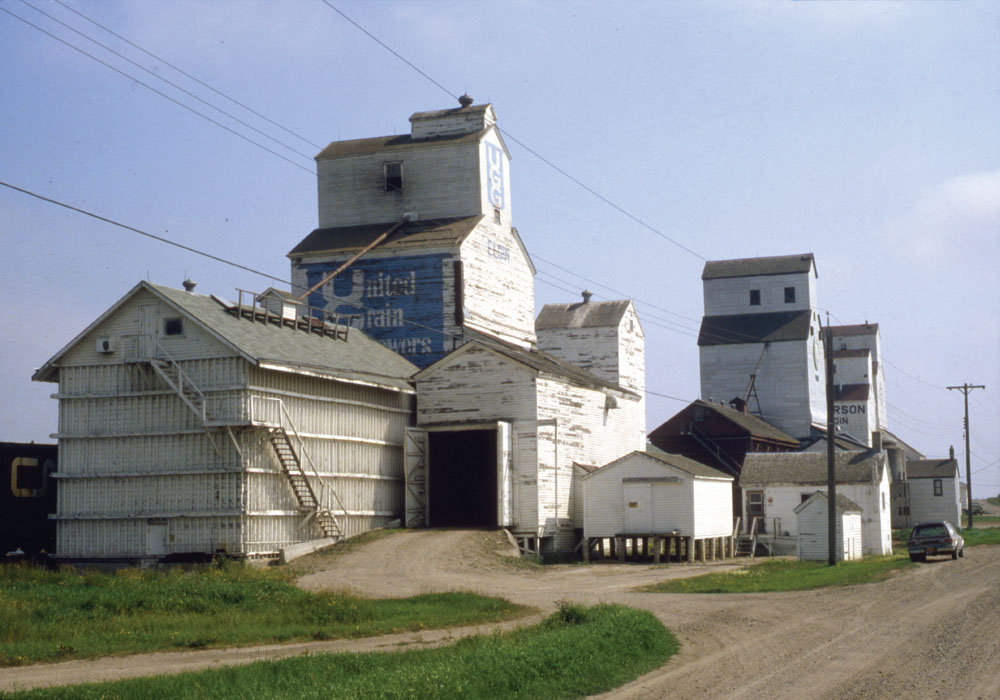
Elgin UGG.jpg
There were four elevators at Elgin when this photo was taken in 1981. The 30,000-bushel elevator in the foreground, built in 1928 by the Canadian Consolidated Grain Company, had two balloon annexes and fertilizer shed when it was sold to United Grain Growers in 1959. It closed in 1985 and was demolished. The 50,000-bushel Manitoba Pool elevator and annex beside it dates from 1926, while the side-by-side Paterson elevators in the background consisted of a smaller one built here in 1923 and a larger one brought from Wakopa in 1966. The Paterson elevators were sold to Pool in 1981. The following year, the smaller one was demolished as the larger one was renovated extensively and a modern crib annex was built beside it. Today, only the former Paterson elevator and its annex remain at the site, in private ownership.
Photo: University of Manitoba Archives & Special Collections
The Pas Pool_cmyk.jpg
The former Manitoba Pool elevator site at The Pas seems literally carved out of the forest in this aerial view from the mid-1990s. Built on the outskirts between 1993 and 1994 to replace a 46-year-old wooden elevator in town that had been purchased from Federal Grain in 1972, this 80,000-bushel, four-bin facility featured all-steel construction and two 4,500-bushel/hour legs. Opened officially in October 1994, it closed almost exactly 14 years later with Viterra officials citing “limited storage and throughput capacity” that made it uneconomical. The elevator was demolished in 2014.
Photo: S. J. McKee Archives, Brandon University
Griswold UGG_CMYK.jpg
As we see in this photo from 1962, United Grain Growers once had three elevators at Griswold. The oldest, a squat 28,000-bushel elevator acquired from Ogilvie Milling, was known as #3 and it stood next to the 47,000-bushel #2 elevator, also a former Ogilvie facility. In the background was the 78,000-bushel #1 elevator built in 1940 using materials salvaged from several demolished elevators. A crib annex was added to #1 around 1954. Available records suggest a single agent managed all three elevators, and there were only three UGG agents at Griswold between 1912 and 1985. The old #3 began to lean over the railway track so it was demolished in 1980. The two remaining elevators closed in 1996 and were later removed from the site.
Photo: University of Manitoba Archives & Special Collections
Napinka Pool B_cmyk.jpg
A railway track, overgrown with vegetation, runs beside an old elevator at Napinka. It was constructed in 1926 by the Ogilvie Milling Company. Its initial capacity of 35,000 bushels was expanded in 1957 with a 25,000-bushel annex. Taken over by Manitoba Pool in 1959, it became the B elevator at this point, used mostly for storing rye and oats. The Pool A elevator, with a 40,000-bushel capacity, was built in 1927 and expanded in 1951 with a 30,000-bushel annex. Later, Pool A was upgraded with a metric scale and larger driveway. The two elevators were operated by a single agent. The annexes were removed in the 1970s and the elevators were closed in July 1984, after efforts to sell them to another company failed. They were sold for use in private grain storage.
Photo: Gordon Goldsborough (July 2016)
Swan River Pool D_cmyk.jpg
A steel-reinforced concrete grain elevator in Swan River, the first such structure in Western Canada, was constructed for Searle Grain by the Gertz Construction Company of Winnipeg. It replaced an earlier wooden elevator. Standing 130 feet high, its 31 bins provided a total capacity of 100,000 bushels. The elevator opened officially on November 29, 1961. Repainted in 1966 following the merger of Searle with Federal Grain, it was painted again six years later when it was purchased by Manitoba Pool, becoming its fourth elevator at this point. Major renovations were made between 1975 and 1976, and a 24-bin wooden crib annex built in 1950, formerly attached to the Pool A, was moved beside it in 1982. The entire complex was demolished sometime between 2006 and 2013. Does anyone know the exact year?
Photo: Bernie Freeman (May 2007)
In the 1950s, there were over 700 grain elevators in Manitoba. Today, there are fewer than 200. You can help to preserve the legacy of these disappearing “Prairie sentinels.”
The Manitoba Historical Society (MHS) is gathering information about all elevators that ever stood in Manitoba, regardless of their present status. Collaborating with the Manitoba Co-operator it is supplying these images of a grain elevator each week in hopes readers will be able to tell the society more about it, or any other elevator they know of.
MHS Gordon Goldsborough webmaster and Journal editor has developed a website to post your replies to a series of questions about elevators. The MHS is interested in all grain elevators that have served the farm community.
Read Also

Reaction rolls in on Health Canada dicamba restriction proposal
Spray expert says proposed dicamba rule change would ban ‘over the top’ use of the herbicide
Your contributions will help gather historical information such as present status of elevators, names of companies, owners and agents, rail lines, year elevators were built — and dates when they were torn down (if applicable).
There is room on the website to post personal recollections and stories related to grain elevators. The MHS presently also has only a partial list of all elevators that have been demolished. You can help by updating that list if you know of one not included on that list.
Your contributions are greatly appreciated and will help the MHS develop a comprehensive, searchable database to preserve the farm community’s collective knowledge of what was once a vast network of grain elevators across Manitoba.
Please contribute to This Old Grain Elevator website here.
You will receive a response, by email or phone call, confirming that your submission was received.
Goldsborough is interested in hearing all sorts of experiences about the elevators — funny, sad, or anything in between. Readers willing to share their stories can leave messages at 204-474-7469.

